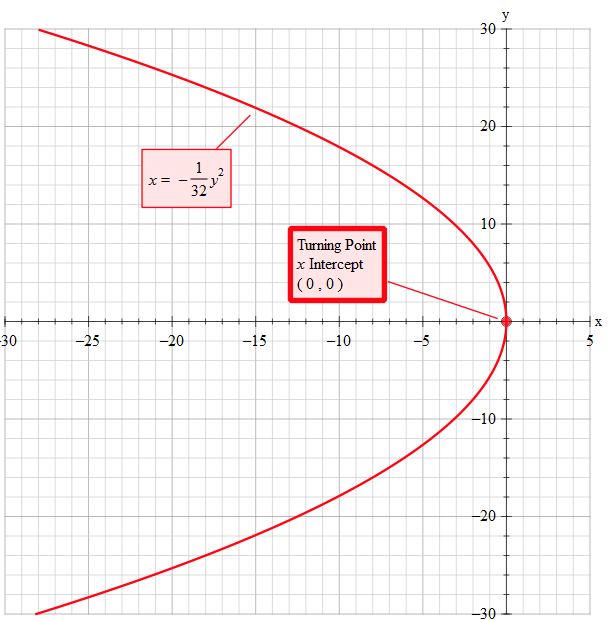How do you find the vertex and intercepts for x = 1/-32y^2?
2 Answers
Vertex
The intercepts are only at 1 point, the origin
The axis of symmetry is the x-axis ie
Explanation:
This is a quadratic in
So instead of form type
Type 1
Type 2
Instead of the horse shoe type shape being up or down it is left or right.
As the coefficient of
Consider equationtype(1): The
Consider equationtype(2); The
However, in this graph
y-intercept is at
 Tony B
Tony B
If you write the Parabolic Equation in the form
then the x value for the vertex will be = - b / 2a.
For the x intercept, set y=0, in the equation
For the y intercept, set x=0,
Explanation:
If you then plug "- b / 2a " in to the equation you will get the y value and thus the vertex coordinates.
Vertex = ( -b/2a , f ( -b/2a) )
The reason this is true is that the vertex is where the slope = 0 and you can find this by setting the derivative = 0
The derivative is 2ax + b
Setting it = 0 ==> x = -b/2a


